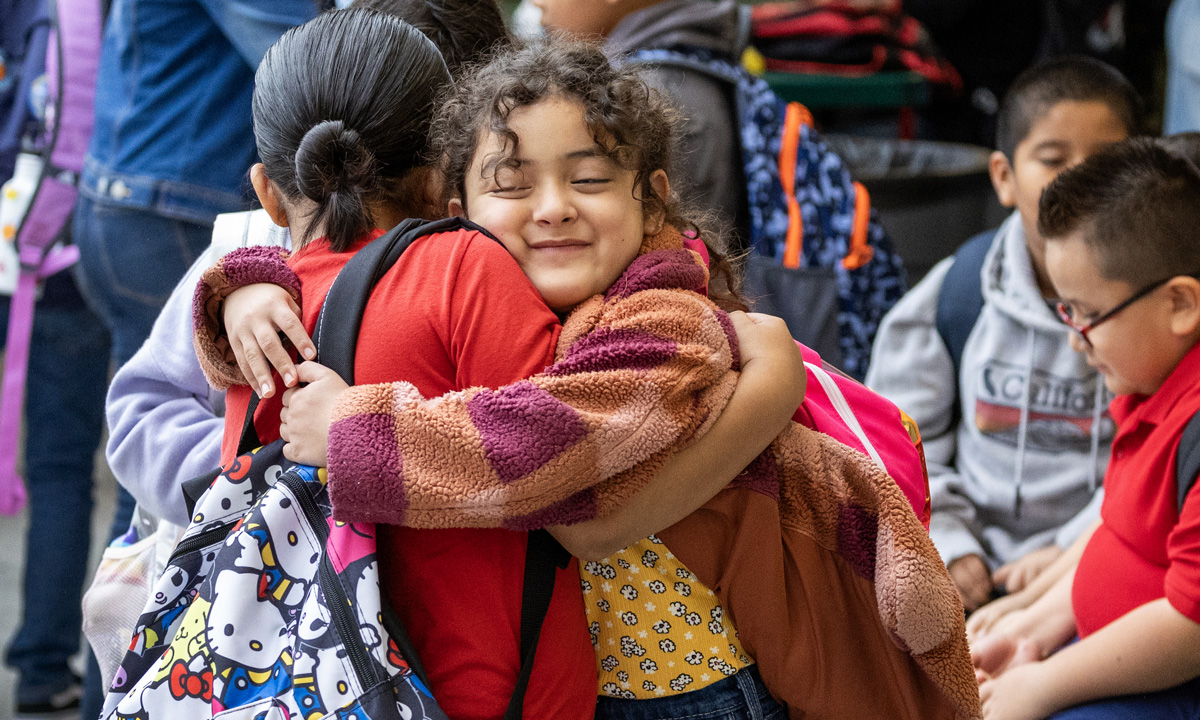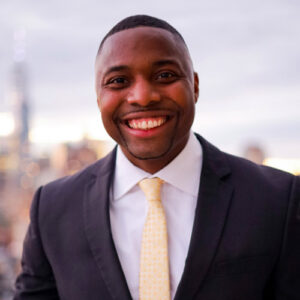The Power of School Relationships: How Restoring Connections Will Help Accelerate Postsecondary Success
David Adams: “The huge learning losses [due to COVID] were just one consequence. The connection losses were just as significant, if not more so.”

Get stories like this delivered straight to your inbox. Sign up for The 74 Newsletter
This essay was originally published as part of the Center on Reinventing Public Education’s 2023 “State of the American Student” report. As part of the effort, CRPE asked 14 experts from various sectors to offer up examples of innovations, solutions or possible paths forward as education leaders navigate the current crisis. Here’s one of those perspectives:
One of my favorite sayings is the Noah principle: “no more prizes for predicting rain; prizes only for building arks.”
Given the catastrophic pandemic of the past few years, it would be easy to focus on the devastating floods that inundated our schools and communities. The huge learning losses were just one consequence. The connection losses were just as significant, if not more so.
These losses were particularly severe for adolescents, for whom peer relationships are central to identity development.
They lost everyday interactions with their peers and the connections strengthened by cooperative learning techniques, extracurriculars, and clubs. That isolation, coupled with the loss of treasured high school rituals such as prom and graduation, contributed to a mental health crisis from which students are still recovering—a crisis of connection and belonging. The research is clear: trusting relationships with peers and teachers are key to learning, but students’ connections were largely confined to their nuclear families during the pandemic.
Now it is up to us to help remedy the damage—not by looking backward at the flood but forward to the future.
As we move from observing the rain to building the ark(s), we must resist the temptation to “boil the ocean”—to think we must solve huge, seemingly intractable problems all at once. Instead of getting paralyzed by “recover from the pandemic,” “improve graduation rates,” or “increase college success,” break the challenge into doable, bite-size pieces and make things work. Let’s start by focusing on elevating the human connections that drive all learning. For the Urban Assembly, a school support agency in New York City, that means the following:
Rebuild caring student-adult relationships in schools
When children and young adults develop their social-emotional skills, experience positive environments in the classroom, and have high-quality interactions with adults and their peers, they learn how to be successful in life. Relationships are key to learning, whether that’s a relationship to the curriculum, to their teachers, or even to a vision of themselves in the future.
These relationships can take many forms, from direct instruction of relationship skills to systems and structures that create a predictable and supportive school climate and culture. Whatever the form, it’s important to see it as a fluid and individualized process. You can’t assess a basketball team only by looking at the final score and skipping the game. Yes, the score is important, but if you want to understand how well the team plays, you’ve got to watch the game and all the dynamics of teamwork on display.
That’s what it takes to understand student learning. For example, our Resilient Scholars Program (used in over 1,500 schools in New York City and more than 20 communities across the country) builds schools’ understanding of the social-emotional processes that help support student success in school and beyond. It’s not just about student work, just like it’s not just about the box score. It’s about the process, and the program helps make that process more visible to students and educators.
Help leaders connect
At the Urban Assembly, we know that the answer to challenging times is community. That’s why we created Principal Learning Communities, where school leaders share best practices around solving problems and mitigate the isolation of leadership. We are creating a causal cascade of care that extends from school leaders to teachers and school staff, and ultimately to students.
Offer students multiple pathways to postsecondary success
Not college for all, but postsecondary success for all, with relevant options for the broad diversity of learners. Some graduates will go on to two-year programs, others to four year colleges, others straight into careers. Our vision is to offer meaningful choices and provide solid preparation that lets students take advantage of those opportunities.
To that end, we have radically reimagined postsecondary preparation. Our Early Career and College Awareness explicitly introduces ninth- and 10th-grade students to selfdiscovery exercises and helps them learn about and engage with various career opportunities and educational pathways. At the same time, our programs help school counselors to provide ongoing student support.
Make education more relevant and meaningful
It’s time to reimagine what it means to be well-educated. Yes, understanding the enduring themes in Shakespeare’s plays will always lend insight into the human condition. But now, more than ever, we must help students connect those insights to the real world. All of our 23 schools, which we support in partnership with the New York City Department of Education, are organized around themes and collaborations with dozens of public entities and private companies such as Cisco, Northwell, and the Port Authority of New York and New Jersey.
Hands-on internships and apprenticeships are the norm. For example, students at the Urban Assembly School for Collaborative Healthcare can earn their medical assistant and EMT certifications by completing internships at Brookdale Hospital and St. Barnabas. One out of every five students graduates with an industry-recognized certification in addition to their high school diploma, and every student has a postsecondary plan that includes college.
At the Urban Assembly School for Design and Construction, every student is enrolled in an architecture or design pathway where they develop cutting-edge thinking and modeling skills that are in high demand from industries. Internships at the nonprofit Exploring the Arts and the Beam Center create real-world opportunities for students to practice what they’ve learned. As a result, 100% of students who graduate have a postsecondary plan, and 75% of those plans involve opportunities in art, architecture, engineering, and construction.
Urban Assembly schools, which serve all students, are designed to nurture students’ individual interests, build connections with mentors who work in fields they aspire to join, and give students access to the sense of purpose that will sustain them in school and in life. When students contribute to solving real-world problems, they can honestly say, “I, too, have something worthy to offer.”
Scale what works
Our social and emotional learning resources have been used in all public schools in New York City. Through Strong Resilient NYC, 1.2 million of the city’s students have access to DESSA, a strength-based social and emotional learning feedback tool. Plus, a guided intervention program helps educators provide targeted, highly responsive support to each individual student.
As ark builders across the country help students recover from the pandemic, we need to embrace a bolder vision of schooling. School can be a central hub of our communities, a place of meaningful connections between students and adults, and a place that connects learning to the real world. That’s our vision, and that’s the future of learning.
See more from the Center on Reinventing Public Education and its 2023 “State of the American Student” report.
Get stories like these delivered straight to your inbox. Sign up for The 74 Newsletter

;)
